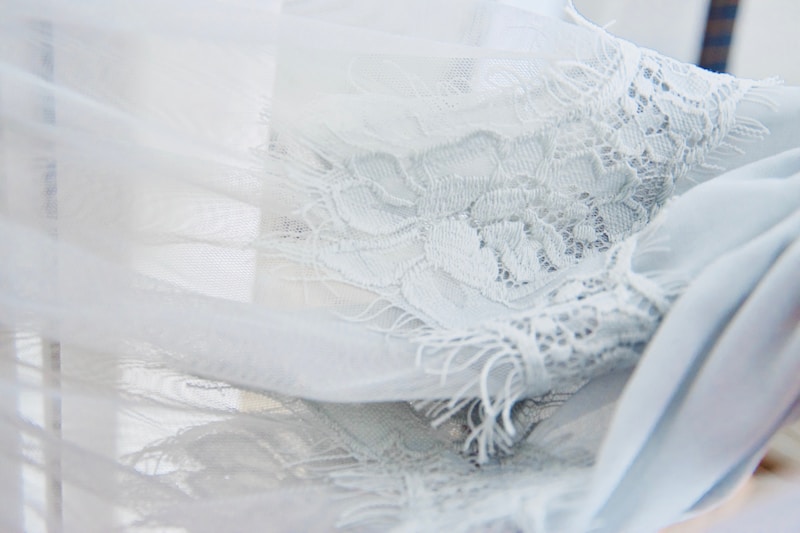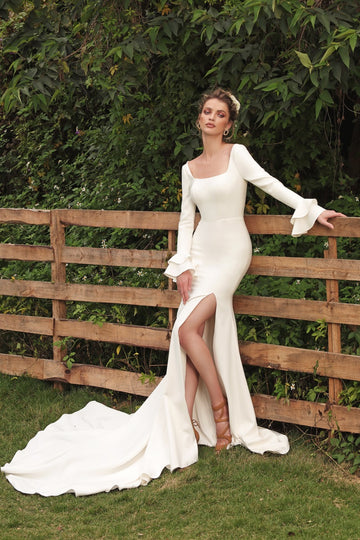How Fabric Thickness Impacts Wedding Dress Comfort: A Comprehensive Guide
How Fabric Thickness Impacts Wedding Dress Comfort: A Comprehensive Guide
Weddings are a celebration of love and joy, and the wedding dress is often the centerpiece of this occasion. However, the choice of fabric is crucial not only for aesthetics but also for comfort. In this article, we will explore how fabric thickness impacts wedding dress comfort, providing insights for brides-to-be and their stylists. Understanding these aspects can significantly influence your wedding day experience.
The Importance of Fabric Thickness
When selecting a wedding dress, brides focus on the style, color, and design, but the fabric's thickness is equally important. Fabric thickness can influence the overall look and feel of the dress, as well as its breathability and ease of movement. Here’s a breakdown of how different fabric thicknesses can affect comfort:
| Fabric Type | Thickness | Comfort Level | Best Season |
| Satin | Medium | Soft and luxurious | Spring & Fall |
| Tulle | Light | Breathable and airy | Summer |
| Silk | Varies | Lightweight and soft | Year-round |
| Organza | Thin | Light with a bit of structure | Spring & Summer |
| Velvet | Thick | Warm and plush | Winter |
How Thickness Affects Breathability
Breathability is a key factor for comfort, especially during long wedding ceremonies and receptions. Thicker fabrics like velvet may provide warmth but can cause overheating in a warmer climate. On the other hand, lighter materials such as tulle allow air circulation, making them perfect for summer weddings.

Mobility and Flexibility
The thickness of the fabric can also impact your ability to move freely. Lighter fabrics tend to allow greater flexibility, which is essential for activities such as dancing. A wedding dress made from a thicker fabric can feel restrictive, making it less enjoyable to partake in the festivities. Consider your wedding day activities when selecting the fabric thickness for your dress.
Fabric Texture and Visual Appeal
While thickness is vital for comfort, the texture of the fabric equally contributes to the visual appeal of the gown. For instance, satin has a smooth finish that enhances the luxurious feel, while organza offers a crisp silhouette. By choosing the right fabric thickness, brides can achieve a beautiful balance between aesthetics and comfort.
Choosing the Right Thickness for Your Body Type
Every bride has different body types and preferences, which can affect how they perceive comfort in their wedding dress. For example:
- Pear-Shaped: Consider medium-thick fabrics like satin, which can streamline the bottom while providing enough structure.
- Hourglass: Lighter fabrics such as chiffon can accentuate curves while keeping the dress comfortable.
- Plus Size: A heavier fabric like velvet can provide comfort and confidence, especially in cooler weather.
Weather Considerations
The time of year and location of your wedding can greatly influence your fabric choice. In warmer climates, opting for thinner fabrics can result in less discomfort. Conversely, winter weddings can benefit from thicker, insulating materials.
Fabric Care and Maintenance
Another aspect of wedding dress comfort is how the fabric reacts to various conditions. Different fabrics require specific care to maintain their appearance and comfort. For instance:
- Satin: Often requires dry cleaning to avoid damage.
- Tulle: Can be hand-washed but is important to air dry to maintain its shape.
- Silk: Requires special attention, as it can easily get wrinkled or damaged if not cared for properly.
Potential Fabric Issues and Solutions
Brides often face challenges with their wedding dress fabric, such as itching from lace or sweating in thick materials. Here are some solutions to common problems:
- Itchiness: Opt for undergarments made from breathable fabrics or lining to alleviate irritation.
- Overheating: Choose dresses with breathable linings or layers that can be adjusted throughout the day.
The Bottom Line: Tips for Choosing Wedding Dress Fabric Thickness
As you navigate the world of Wedding Dress Shopping, keep these tips in mind:
- Consider your personal comfort alongside aesthetic preferences.
- Pay attention to the season and climate of your wedding day.
- Sample different fabrics and thicknesses to gauge comfort levels.
- Think about mobility and flexibility to ensure you can enjoy your big day.
In conclusion, the thickness of the fabric plays a crucial role in the comfort of a wedding dress. By carefully selecting your fabric based on factors such as breathability, mobility, body type, and the wedding season, you can ensure a comfortable and beautiful experience on your special day. Remember that comfort is not just about avoiding irritation or sweating; it's about feeling confident and ready to enjoy every moment. Happy wedding planning!
